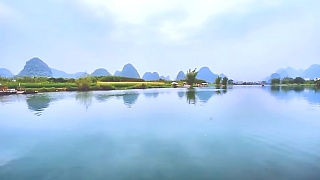
|
With Char 787 ...
With Nick in China ...
Visitor Guide: Mount Qingcheng & Dujiangyan
Introduction
Mount Qingcheng (青城山) and Dujiangyan (都江堰) are two of Sichuan's most famous cultural and natural landmarks. Located near Chengdu, they offer a unique blend of breathtaking scenery, ancient engineering marvels, and deep-rooted Taoist traditions. This guide will help you explore these sites and understand their spiritual significance.
Note: Both Mount Qingcheng and Dujiangyan are UNESCO World Heritage Sites, recognized for their cultural and historical importance.
Mount Qingcheng (青城山)
What to See
Shangqing Palace (上清宫): One of the most important Taoist temples on the mountain, Shangqing Palace is a serene place for reflection and meditation. It offers insights into Taoist practices and is surrounded by lush greenery.
Tianshi Cave (天师洞): This cave is said to be where Zhang Daoling, the founder of the Way of the Celestial Masters, practiced Taoism. It is a sacred site for Taoist pilgrims.
Jianfu Palace (建福宫): A quieter spot on the mountain, Jianfu Palace is perfect for those looking to experience the peacefulness of Taoism in a more secluded environment.
Natural Scenery: Mount Qingcheng is known for its dense forests, tranquil pathways, and beautiful mountain views, embodying the Taoist principle of harmony with nature.
Activities
Hiking: Explore the mountain's many trails, which vary in difficulty. The trails wind through ancient temples, caves, and pavilions, offering both spiritual and physical rejuvenation.
Meditation and Tai Chi: Engage in meditation or Tai Chi sessions at various temples, guided by local Taoist practitioners. This is a great way to connect with the spiritual atmosphere of the mountain.
Photography: Capture the natural beauty of the mountain, with its misty peaks and verdant landscapes, which are often compared to a classical Chinese painting.
Visitor Information
Location: About 65 kilometers (40 miles) west of Chengdu.
Opening Hours: 8:00 AM - 6:00 PM daily.
Best Time to Visit: Spring and autumn offer the best weather for hiking and sightseeing.
How to Get There: You can take a high-speed train from Chengdu to Qingchengshan Station, followed by a short bus or taxi ride to the mountain.
Dujiangyan (都江堰)
What to See
Yuzui (鱼嘴): The "Fish Mouth" is the central part of the Dujiangyan irrigation system, where the Min River is split into two channels. It is a marvel of ancient engineering that showcases the Taoist principle of working in harmony with nature.
Baopingkou (宝瓶口): This "Bottle-Neck Channel" regulates water flow into the irrigation system, another example of the Taoist-inspired design that emphasizes balance and non-interference.
Erwang Temple (二王庙): A temple dedicated to Li Bing and his son, the architects of Dujiangyan. The temple is a place of worship and offers great views of the irrigation system and surrounding mountains.
Activities
Walking Tours: Explore the ancient irrigation system on foot, with guided tours available to explain the history and engineering behind Dujiangyan.
Temple Visits: Participate in traditional ceremonies at Erwang Temple, where you can learn about the spiritual significance of water in Taoism.
Boat Rides: Take a boat ride on the Min River to experience the irrigation system from a different perspective and enjoy the scenic views.
Visitor Information
Location: Approximately 56 kilometers (35 miles) northwest of Chengdu.
Opening Hours: 8:00 AM - 6:00 PM daily.
Best Time to Visit: Spring and autumn, when the weather is mild and the scenery is at its best.
How to Get There: Buses and trains run regularly from Chengdu to Dujiangyan City. From there, local transportation can take you directly to the site.
Tips for Visitors
Dress Comfortably: Wear comfortable shoes and clothing suitable for hiking and walking. The weather can change quickly, so bring a light jacket.
Respect the Culture: When visiting temples, be respectful of religious practices. Quiet reflection is encouraged, and photography may be restricted in certain areas.
Stay Hydrated: Bring water, especially during the warmer months. There are also small vendors selling drinks and snacks along the trails.
Consider a Guided Tour: Hiring a guide can enhance your experience by providing detailed information about the historical and cultural significance of the sites.
Contact Information
Mount Qingcheng Visitor Center: +86 28 87288101
Dujiangyan Visitor Center: +86 28 87136100
Tourist Information Hotline: 12301 (China National Tourism Administration)
|

 NanChang walking tour, GuangXi province
NanChang walking tour, GuangXi province





